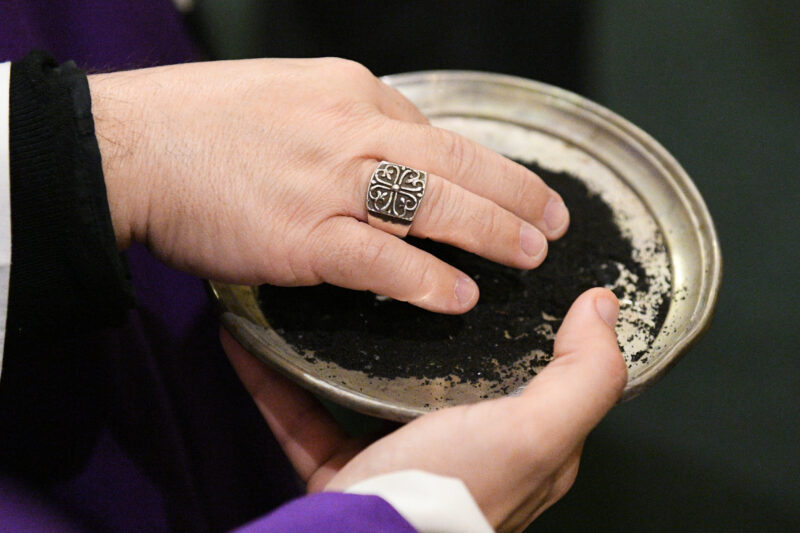A very particular rite in the liturgy is that of Ash Wednesday. On Ash Wednesday ashes are blessed and placed upon the heads of the faithful. This takes place right after the homily, or the proclamation of the Gospel, and replaces the penitential rite at the beginning of the Mass. Whilst there is no rule that states how long one should keep the ashes on the head, in reality this is a profound symbol so rich in meaning that goes beyond the season of Lent extending to our entire life.
First of all, the ashes used in this ceremony are the ashes of palm and olive branches blessed and used on Palm Sunday of the previous year, thus connecting the beginning of Lent with its conclusion, when we commemorate the passion, death, and resurrection of Christ. This penitential period of Lent hinges on the mystery of Christ’s cross.
While the faithful form a procession and approach the altar, while placing the ashes, the priest repeats each time one of these two biblical verses: “Repent, and believe in the Gospel,” or “Remember that you are dust, and to dust you shall return.”
The first verse refers to Christ’s words at the beginning of his public ministry, immediately after John the Baptist was put into prison (Mk1:15). Therefore, these words reveal the beginning of Jesus’ journey with his disciples, the same journey He wishes to do with us as we commence Lent. The second verse is taken from the book of Genesis wherein, after the fall of Adam and Eve, God executes his judgment (Gen 3:19). In this instance Adam and Eve were cast out of the Garden of Eden and were destined for a mortal life, meaning a physical life that is ended by death. This gesture of the placing the ashes reminds us of our mortality, emphasising how important it is not to be attached to the things of this world, and also Christ’s call to repent and belief.
Furthermore, the use of ashes can be found in many parts of the Old Testament, as a sign of repentance while asking for God’s mercy. In the book of Judith, we find that “all the men and women of Israel, and their children, living at Jerusalem, prostrated themselves before the temple and put ashes on their heads and spread out their sackcloth before the Lord” (Judith 4:11). In the book of Jonah, we read how the people repented after the proclamation of the prophet, and even the King of Nineveh “arose from his throne, removed his robe, and covered himself with sackcloth, and sat in ashes” (Jon 3:6). We find similar examples in the books of Job, Esther, Samuel and Daniel. The ashes are a sign of repentance, mourning, humility, and penance. In the same manner, through this celebration on Ash Wednesday we are reminded of the importance to repent from our sins and humbly receive God’s mercy.
St. John Paul 11 in 2000 explained how this liturgical rite of Ash Wednesday, with the blessing and placing of the ashes, is a simple and very profound gesture because “the Church reminds man, believer and sinner, of his weakness in the face of evil and especially of his total dependence on God’s infinite majesty.”
Surely, as the mass continues, the ashes fall away quickly from our, yet this symbol reminds us of the reality of life, that in spite of all its fragility and weakness, God brings us his salvation and mercy through Christ.
Stop and Reflect:
- Stop for a moment and think of those things you are attached to. Remember that we are all mortal.
- Stop for a moment and think of those things you are attached to. Remember that we are all mortal.




